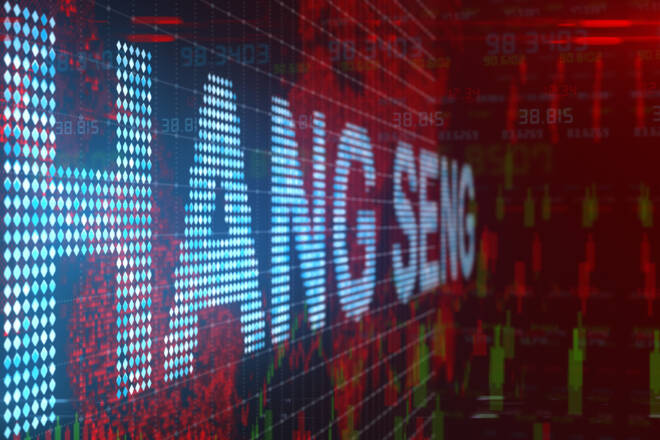Advertisement
Advertisement
Hang Seng Index, ASX 200, Nikkei Index: Markets Rally on US Jobs and China Inflation
By:
Key Points:
- On Friday, August 9, the Hang Seng Index led the ASX 200 and Nikkei Index into positive territory.
- Overnight US labor market data eased fears of a US recession, driving demand for riskier assets.
- Inflation figures from China added to the positive mood, with July numbers signaling an improving demand environment.
US Equity Markets: Relief Rally
The US equity markets had a positive Thursday, August 8, session. The Nasdaq Composite Index jumped by 2.87%, while the Dow and the S&P 500 rallied by 1.76% and 2.30%, respectively.
US Jobless Claims Trigger Market Rally
Investor sentiment improved as initial jobless claims dropped from 250k in the week ending July 27 to 233k in the week ending August 3. The fall eased fears of a US hard landing. Tighter labor market conditions could drive wage growth and disposable income. Rising disposable income may fuel consumer spending that contributes over 60% to GDP.
Expert Commentary
FOMC Member Thomas Barkin remarked on the US labor market on Thursday, observing that firms were neither hiring nor firing but that it could turn in either direction.
Arch Capital Global Chief Economist Parker Ross shared Barkin’s view on the US labor market, stating,
“Recall that initial claims are flows into unemployment, while continuing claims are a reflection of how many people are unemployed. Flows (i.e. layoffs) have been relatively normal for most of 2024, but unemployed workers are taking longer to find a new job, which is reflected in the much higher level of continuing claims vs initial claims relative to recent non-COVID norms.”
China Inflation Signals Higher Demand
On Friday, August 9, inflation numbers from China fueled hopes of improving demand.
The annual inflation rate rose from 0.2% in June to 0.5% in July. Upward trends in consumer price inflation would signal a pickup in private consumption and economic activity.
Despite producer prices continuing to send deflationary measures, investors accepted better-than-expected numbers.
Natixis Asia Pacific Chief Economist Alicia Garcia Herrero commented on the inflation figures, stating,
“China’s CPI rose more than expected (0.5% YoY) but producer prices remained in deflationary mode (-0.8% YoY). Hard to a change on the latter as China keeps on building manufacturing capacity.”
Hang Seng and Mainland China Markets Rally
The Hang Seng Index advanced by 1.77% on Friday morning, with the tech sector tracking overnight gains from the US.
The Hang Seng Tech (HSTECH) Index rallied by 2.75%, with Alibaba (9988) and Baidu (9888) jumping by 2.16% and 4.20%, respectively.
Mainland China’s equity markets joined the broader equity markets in positive territory supported by China’s inflation numbers. The CSI 300 and the Shenzhen Composite Index saw gains of 0.27% and 0.23%, respectively.
Nikkei Index Jumps on USD/JPY and Tech Gains
The Nikkei Index was up 1.46% on Friday morning, with tech stocks and a stronger Yen contributing. On Thursday morning, the USD/JPY advanced for the fourth consecutive session, easing fears of another Yen carry trade unwind and a slump in demand for Nikkei Index-listed stocks.
Softbank Group Corp. (9984) gained 5.03%, while Sony Corp. (6758) and Tokyo Electron Ltd. (8035) were up by 2.16% and 1.54%, respectively.
ASX 200 Tracks the Overnight US Market Gains
The ASX 200 Index gained 1.15% on Friday morning, tracking the overnight US equity market advances. Gains were broad-based, with bank, oil, gold, mining, and tech stocks enjoying a positive end to the week.
The S&P ASX All Technology Index (XTX) surged by 3.11%, while gold-related stock Northern Star Resources Ltd. (NST) rose by 1.74%. Woodside Energy Group Ltd (WDS) was up 2.13%, following overnight crude oil price gains.
Investors should remain alert amidst economic growth fears and shifting monetary policy expectations. Closely monitor the news wires, real-time data, and expert commentary to manage trading strategies accordingly. Stay informed with our latest news and analysis to manage positions across the Asian equity markets.
About the Author
Bob Masonauthor
With over 28 years of experience in the financial industry, Bob has worked with various global rating agencies and multinational banks. Currently he is covering currencies, commodities, alternative asset classes and global equities, focusing mostly on European and Asian markets.
Advertisement
